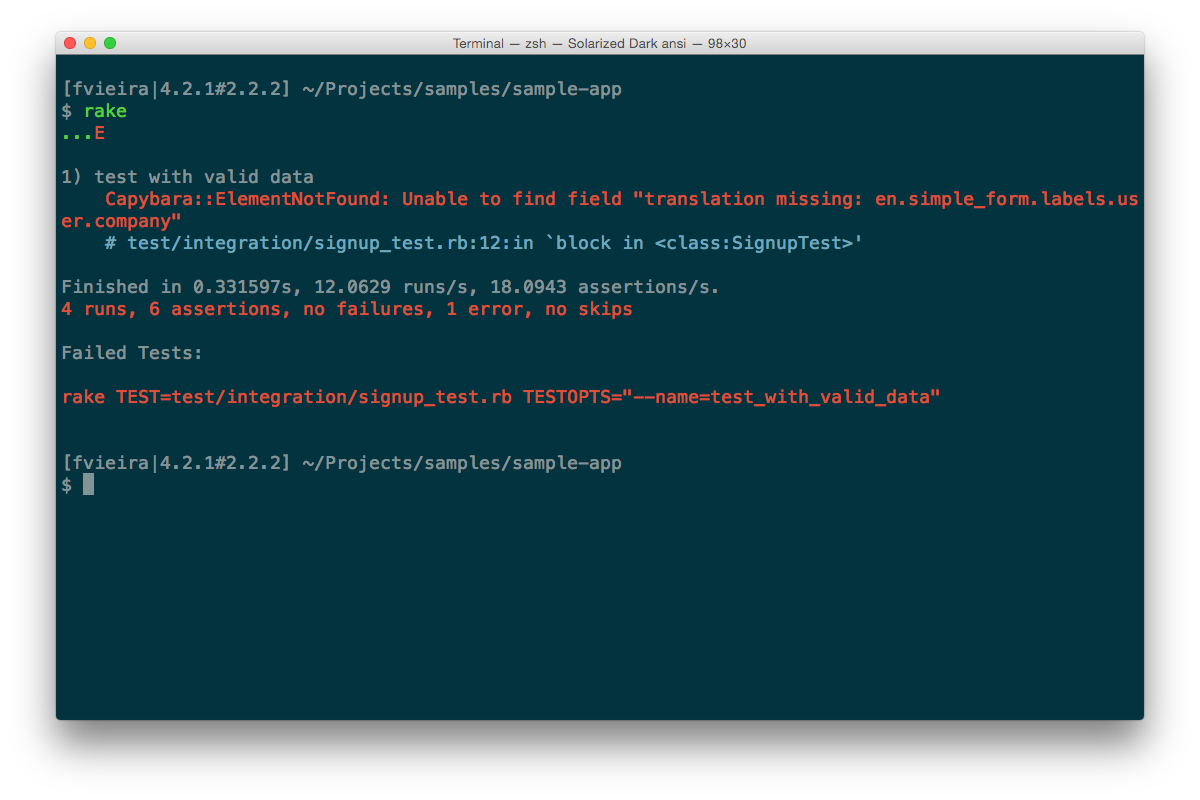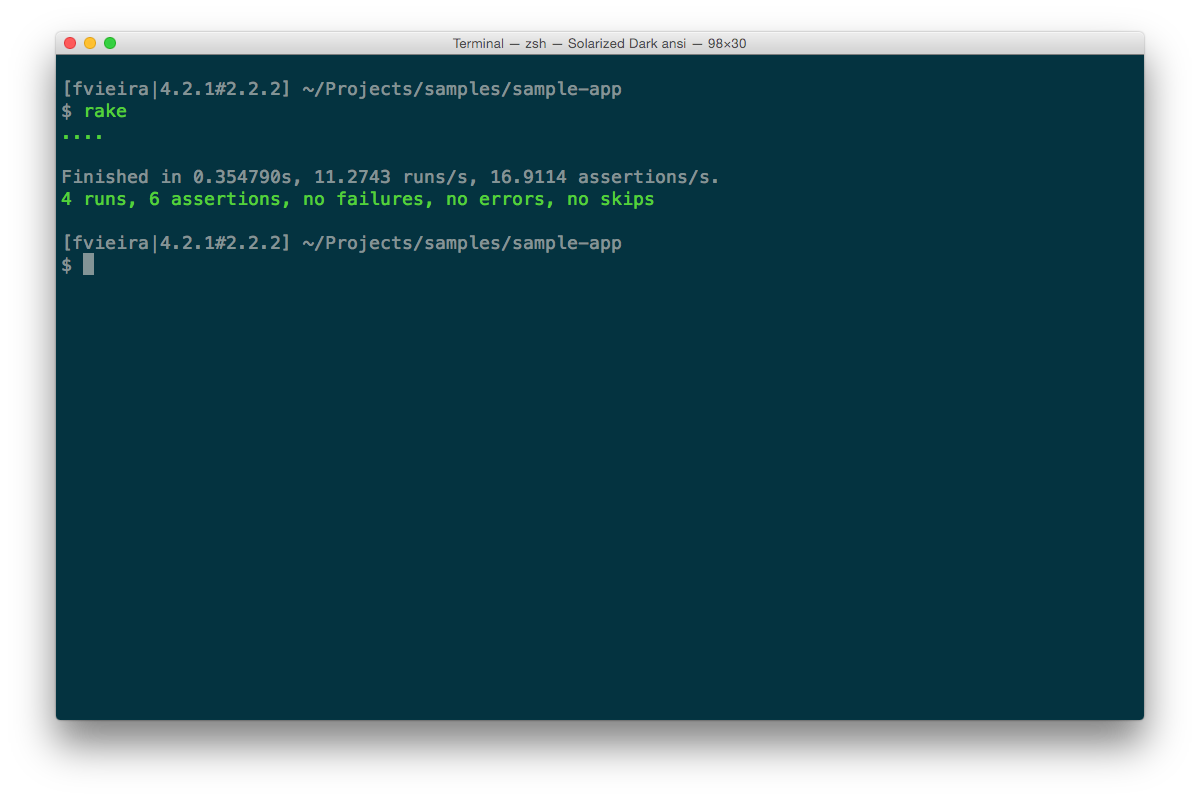/usr/share/doc/ruby-minitest-utils/README.md is in ruby-minitest-utils 0.2.4+debian-1.
This file is owned by root:root, with mode 0o644.
The actual contents of the file can be viewed below.
1 2 3 4 5 6 7 8 9 10 11 12 13 14 15 16 17 18 19 20 21 22 23 24 25 26 27 28 29 30 31 32 33 34 35 36 37 38 39 40 41 42 43 44 45 46 47 48 49 50 51 52 53 54 55 56 57 58 59 60 61 62 63 64 65 66 67 68 69 70 71 72 73 74 75 76 77 78 79 80 81 82 83 84 85 86 87 88 89 90 91 92 93 94 95 96 97 98 99 100 101 102 | # Minitest::Utils
Some utilities for your Minitest day-to-day usage.
Includes:
- A better reporter (see screenshot below)
- A [TestNotifier](http://github.com/fnando/test_notifier) reporter
- Some Rails niceties (set up FactoryGirl, WebMock and Capybara)
- Add a `t` and `l` methods (i18n)
## Installation
Add this line to your application's Gemfile:
```ruby
gem 'minitest-utils'
```
And then execute:
$ bundle
Or install it yourself as:
$ gem install minitest-utils
## Defining tests
This gem adds the `Minitest::Test.test` method, so you can easy define your methods like the following:
```ruby
class SampleTest < Minitest::Test
test 'useless test' do
assert true
end
end
```
This is equivalent to defining a method named `test_useless_test`. You can also skip the block, which will define a [flunk](https://github.com/seattlerb/minitest/blob/77120c5b2511c4665610cda06c8058c801b28e7f/lib/minitest/assertions.rb#L477-L480) call.
You can also define `setup` and `teardown` steps.
```ruby
class SampleTest < Minitest::Test
setup do
DB.connect
end
teardown do
DB.disconnect
end
test 'useless test' do
assert true
end
end
```
## Screenshots




## Rails extensions
minitest-utils sets up some things for your Rails application. Just load `minitest/utils/rails` to set up:
- [Capybara](https://github.com/jnicklas/capybara): includes `Capybara::DSL`, sets default driver before every test, resets session and creates a helper method for setting JavaScript driver.
- [FactoryGirl](https://github.com/thoughtbot/factory_girl): adds methods to `ActiveSupport::TestCase`.
- [WebMock](https://github.com/bblimke/webmock): disables external requests (except for codeclimate) and tracks all requests on `WebMock.requests`.
- locale routes: sets `Rails.application.routes.default_url_options[:locale]` with your current locale.
- [DatabaseCleaner](https://github.com/DatabaseCleaner/database_cleaner): runs `DatabaseCleaner.start` and `DatabaseCleaner.clean` before and after every test respectively.
- Other: `t` and `l` alias to I18n.
```ruby
class SignupTest < ActionDispatch::IntegrationTtest
use_javascript! #=> enables JavaScript driver
end
```
Also, if you're using routes like `:locale` scope, you can load this file to automatically set your route's `:locale` param.
```ruby
require 'minitest/utils/rails/locale'
```
## Development
After checking out the repo, run `bin/setup` to install dependencies. Then, run `bin/console` for an interactive prompt that will allow you to experiment.
To install this gem onto your local machine, run `bundle exec rake install`. To release a new version, update the version number in `version.rb`, and then run `bundle exec rake release` to create a git tag for the version, push git commits and tags, and push the `.gem` file to [rubygems.org](https://rubygems.org).
## Contributing
1. Fork it ( https://github.com/fnando/minitest-utils/fork )
2. Create your feature branch (`git checkout -b my-new-feature`)
3. Commit your changes (`git commit -am 'Add some feature'`)
4. Push to the branch (`git push origin my-new-feature`)
5. Create a new Pull Request
|